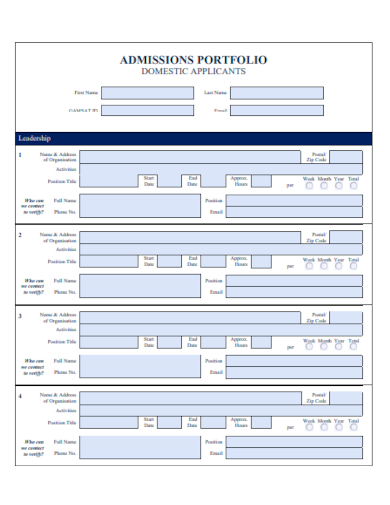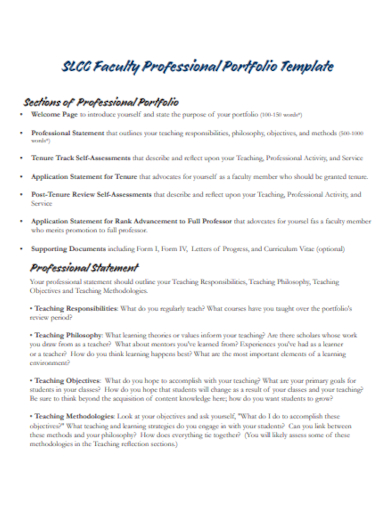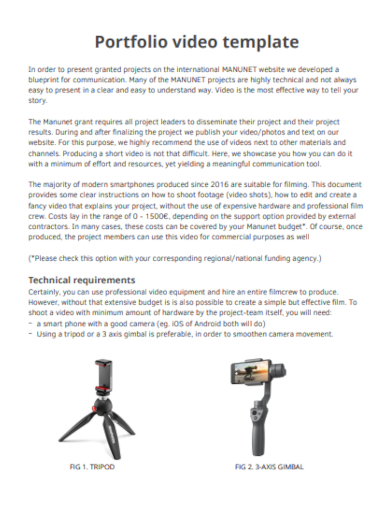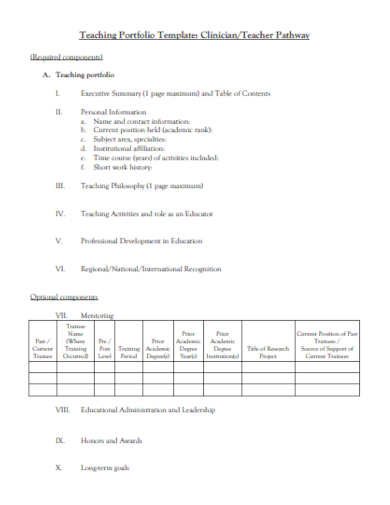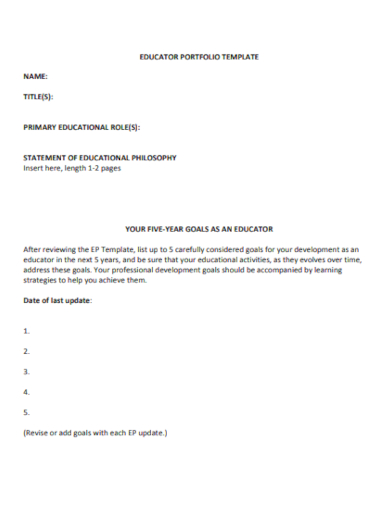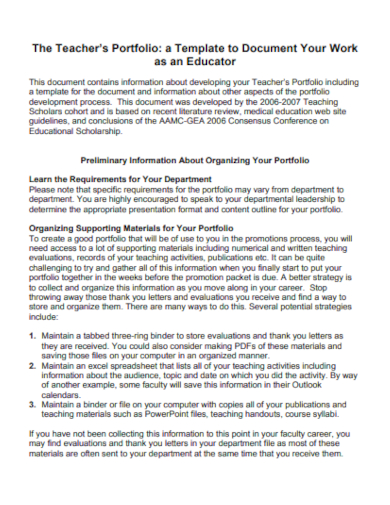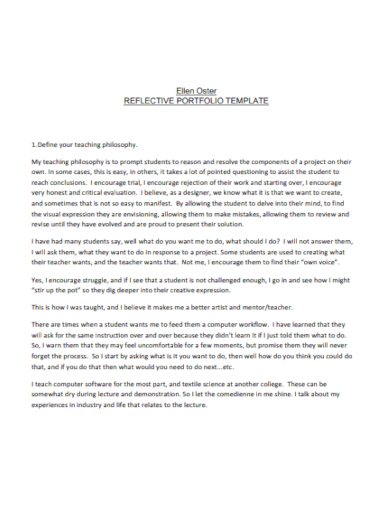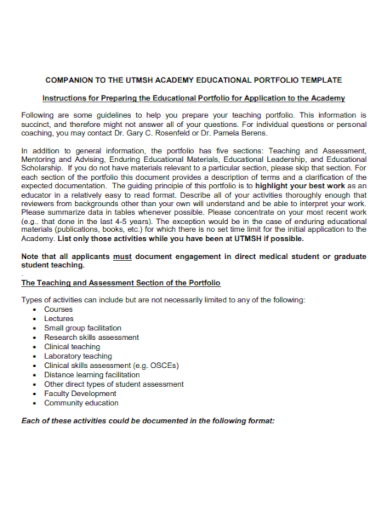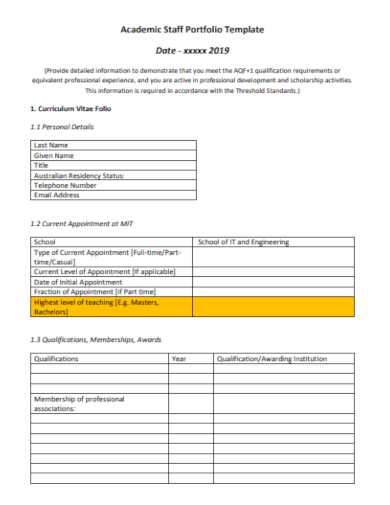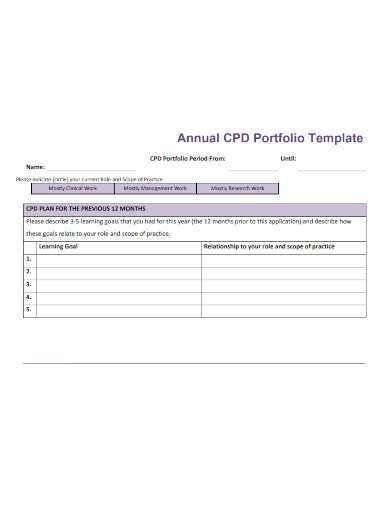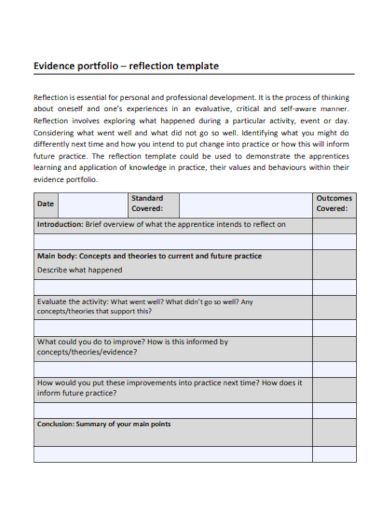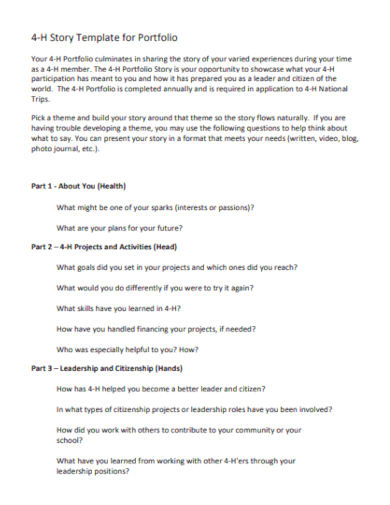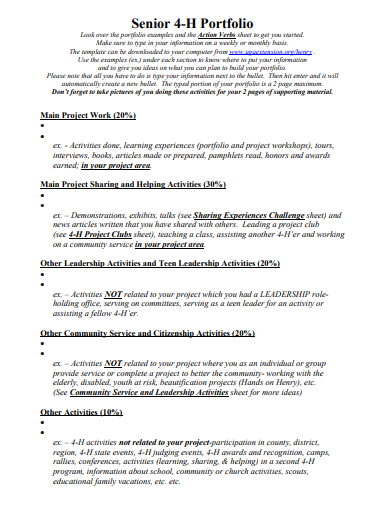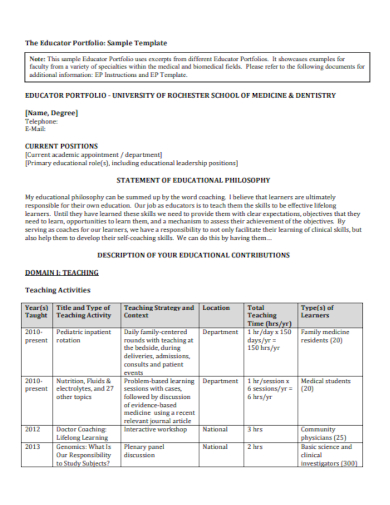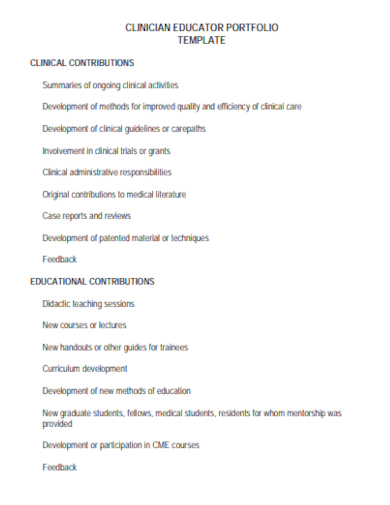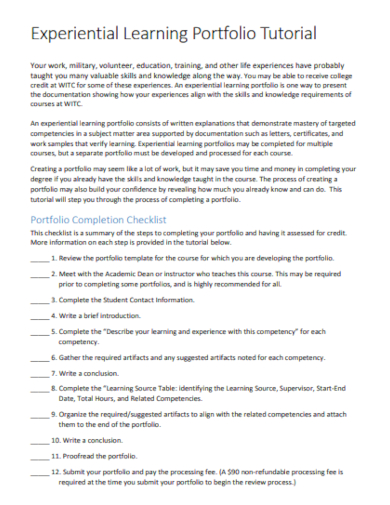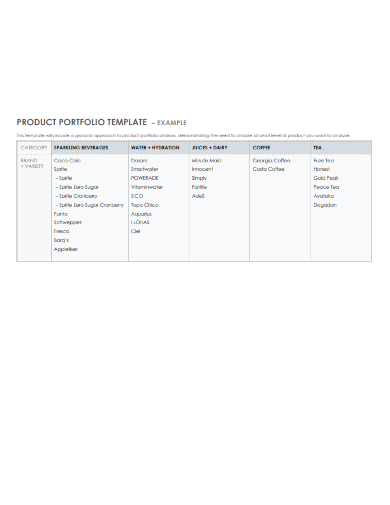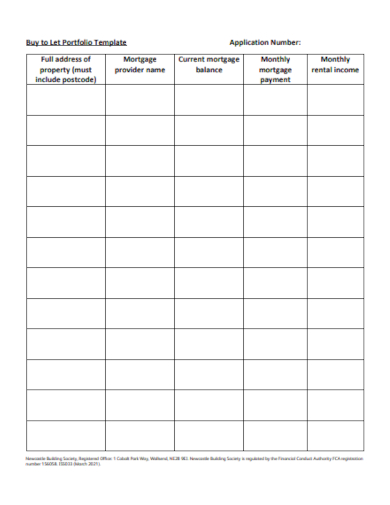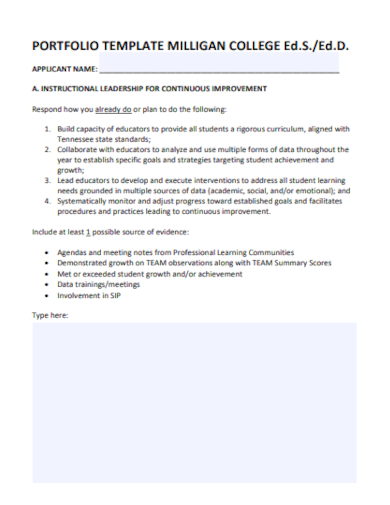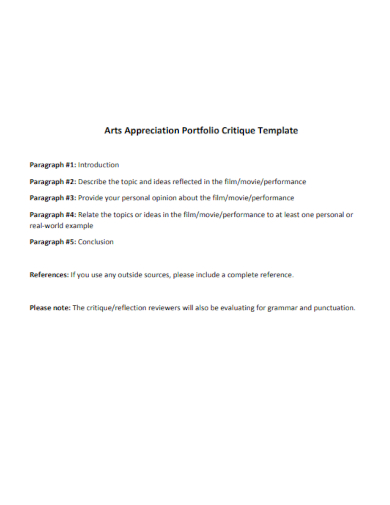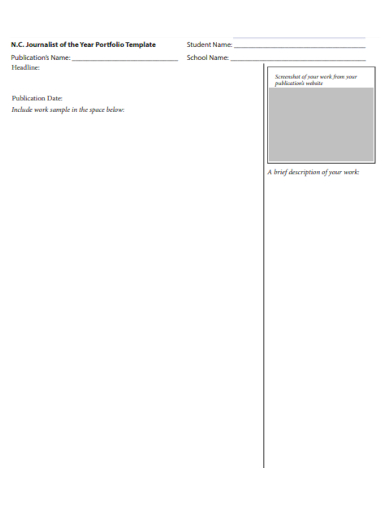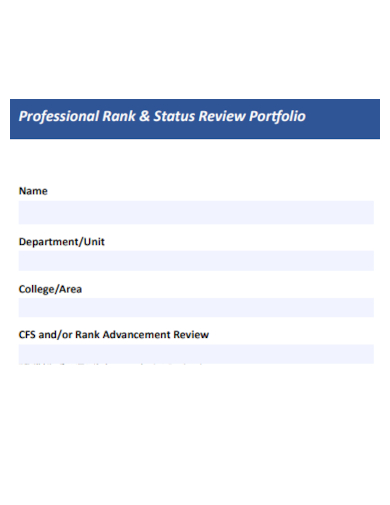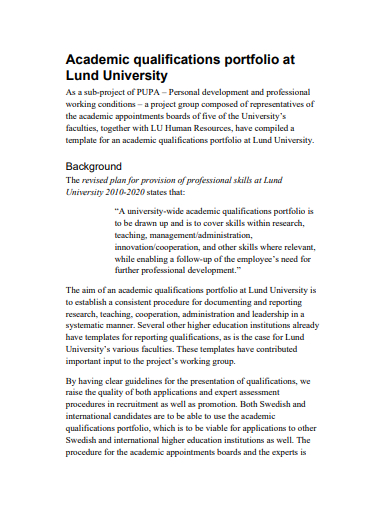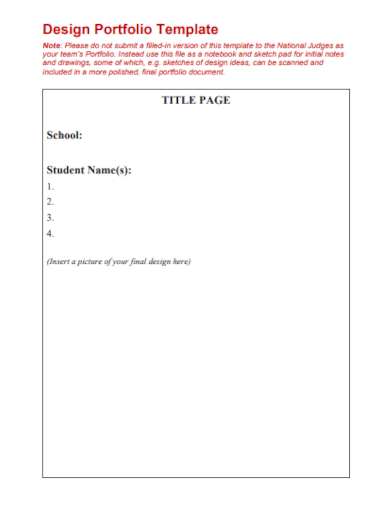A portfolio refers to a material that contains a compilation of either academic and professional works or other forms of educational evidence to evaluate one’s coursework quality, learning progress, and academic accomplishments. This material is also used to determine whether a student has met the learning standards or requirements needed to complete their courses. In business, a financial portfolio is a collection of a business’s financial assets like stocks, bonds, cash, alternative investments, and more.
30+ Portfolio Samples
1. Magazine Style Portfolio Template

2. Architecture Portfolio Template

3. Personal Portfolio Template

4. Project Management Portfolio Template

5. Property Portfolio Template

6. Admission Portfolio
7. Faculty Professional Portfolio
8. Portfolio Video Template
9. Teaching Portfolio Template
10. Educator Portfolio
11. Teacher Portfolio
12. Reflective Portfolio
13. Academy Portfolio
14. Academic Staff Portfolio
15. Annual Portfolio
16. Evidence Portfolio
17. Story Template For Portfolio
18. Project Portfolio
19. High School Portfolio
20. College Clinician Portfolio
21. Portfolio Checklist
22. Product Portfolio
23. Buy to Let Portfolio Template
24. College Portfolio Sample
25. Personal Appreciation Portfolio Template
26. Journalist Digital Portfolio
27. Portfolio Statement
28. Portfolio Cover Page
29. Professional Status Review Portfolio
30. University Portfolio
31. Design Portfolio Template
What is a Portfolio?
Individuals utilize portfolios to compile their academic and professional works that represent their skills, beliefs, qualifications, training, education, and other relevant experiences which also provides an insight into their personality and professional ethic. Portfolios in the business setting are a material that has a collection of investments such as commodities, bonds, cash, and stocks but they can also contain a wide variety of assets like real estate, private investments, and art. Other materials you can use include a portfolio management plan, portfolio assessment template, investment analysis, product portfolio, company portfolio templates, investment management plans, and more.
How to Create a Portfolio
A portfolio can be used to show an individual’s professional and creative talents in a more detailed manner than a resume. Creating a portfolio might greatly depend on one’s field of work most portfolios are created with basic aspects that are applicable across all industries or fields. Portfolios are created to compile the best work samples of an applicant to illustrate their qualifications and expertise in a particular area which enables potential employers to understand their capabilities.
Step 1: Determine the Best Samples of Your Work
Start by determining your best work samples and organizing them accordingly. Make sure to maintain its diversity and maintain the engagement of its content. Your recipient might have limited time to review your portfolio so it is important to plan your layout in a manner that communicates the important information effectively.
Step 2: Create Sections for Your Content
You can use a list or table of contents if your portfolio contains many projects. This will provide easier navigation for your readers. Create this section in a creative way to attract the attention of your readers.
Step 3: Provide Your Resume and Write a Personal Statement
Include your resume to provide your basic information such as your contact list, email address, and more. Create a personal statement to outline the professional and personal goals you want to achieve.
Step 4: Include Relevant References
Provide a reference list of people who know you and can vouch for your talents and qualifications. These people can be your colleagues, superiors, mentors, past clients, or professors.
FAQs
What should you include in your portfolio?
In your portfolio, you can include your statement of originality, work philosophy, resume, work samples, work in progress, academic plan of study, and a list of references.
What are the different types of portfolios?
The different types of portfolios include an income portfolio which highlights the security of a steady flow of income from investments, a growth portfolio which presents high-risk and reward aspects, and a value portfolio which enables holders to generate substantial earnings.
What should be considered when building a portfolio?
Before building a portfolio, there are things you have to consider first. These factors are the financial goals you want to achieve, diversification which is the process of allocating your funds, and investment horizon which refers to the time an investor must achieve their goal.
A portfolio in business is a collection of multiple financial assets that a particular investor possesses or owns. The meaning of this material or document varies depending on the investor’s investment goals, financial situation, and risk tolerance. Portfolios commonly contain various financial assets like mutual funds, bonds, stocks, real estate, deposits, and more.
Related Posts
FREE 10+ Engineering Company Profile Samples in PDF MS Word
FREE 10+ Product Portfolio Management Samples in PDF MS Word
FREE 7+ Digital Storyboard Templates in MS Word PDF
FREE 50+ Table of Content Samples in MS Word Google Docs ...
FREE 16+ Software Company Profile Samples in PDF MS Word
FREE 13+ IT Company Profile Samples in PDF MS Word
FREE 10+ Research Analysis Report Samples in MS Word PDF
FREE 8+ Boston Matrix Samples in PDF MS Word
FREE 7+ Investment Management Proposal Samples in PDF
FREE 18+ Company Profile Samples in Pages MS Word | PDF
FREE 11+ Architecture Brochure Templates in PSD EPS | AI | PDF
FREE 10+ Virtual Assistant Proposal Samples in PDF MS Word ...
FREE 9+ Transport Company Profile Samples in PDF
FREE 10+ Investment Company Profile Samples [ Holding, Banking ...
FREE 7+ Catering Company Profile Samples in DOCX PDF

